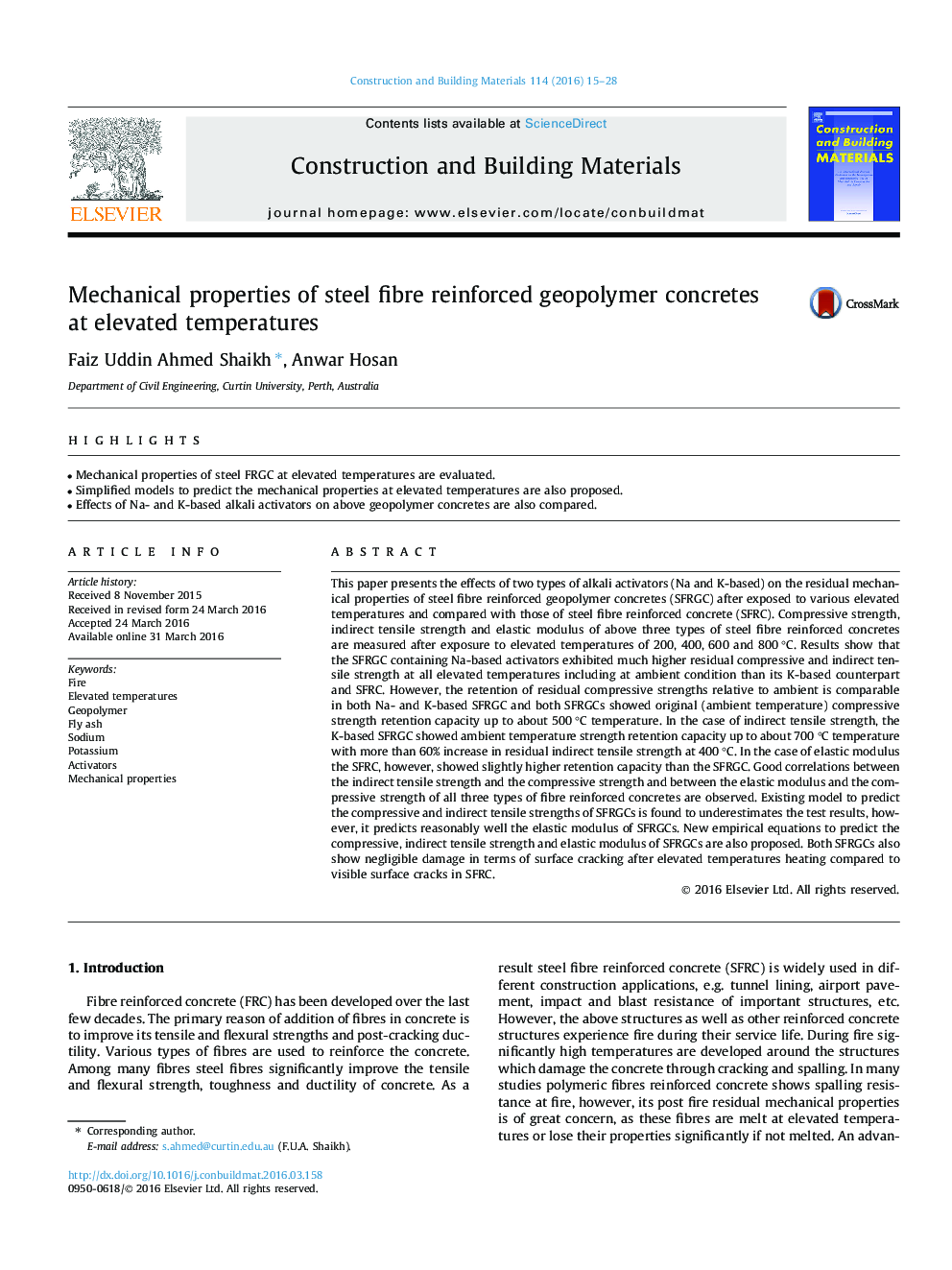| کد مقاله | کد نشریه | سال انتشار | مقاله انگلیسی | نسخه تمام متن |
|---|---|---|---|---|
| 255957 | 503538 | 2016 | 14 صفحه PDF | دانلود رایگان |
• Mechanical properties of steel FRGC at elevated temperatures are evaluated.
• Simplified models to predict the mechanical properties at elevated temperatures are also proposed.
• Effects of Na- and K-based alkali activators on above geopolymer concretes are also compared.
This paper presents the effects of two types of alkali activators (Na and K-based) on the residual mechanical properties of steel fibre reinforced geopolymer concretes (SFRGC) after exposed to various elevated temperatures and compared with those of steel fibre reinforced concrete (SFRC). Compressive strength, indirect tensile strength and elastic modulus of above three types of steel fibre reinforced concretes are measured after exposure to elevated temperatures of 200, 400, 600 and 800 °C. Results show that the SFRGC containing Na-based activators exhibited much higher residual compressive and indirect tensile strength at all elevated temperatures including at ambient condition than its K-based counterpart and SFRC. However, the retention of residual compressive strengths relative to ambient is comparable in both Na- and K-based SFRGC and both SFRGCs showed original (ambient temperature) compressive strength retention capacity up to about 500 °C temperature. In the case of indirect tensile strength, the K-based SFRGC showed ambient temperature strength retention capacity up to about 700 °C temperature with more than 60% increase in residual indirect tensile strength at 400 °C. In the case of elastic modulus the SFRC, however, showed slightly higher retention capacity than the SFRGC. Good correlations between the indirect tensile strength and the compressive strength and between the elastic modulus and the compressive strength of all three types of fibre reinforced concretes are observed. Existing model to predict the compressive and indirect tensile strengths of SFRGCs is found to underestimates the test results, however, it predicts reasonably well the elastic modulus of SFRGCs. New empirical equations to predict the compressive, indirect tensile strength and elastic modulus of SFRGCs are also proposed. Both SFRGCs also show negligible damage in terms of surface cracking after elevated temperatures heating compared to visible surface cracks in SFRC.
Journal: Construction and Building Materials - Volume 114, 1 July 2016, Pages 15–28
